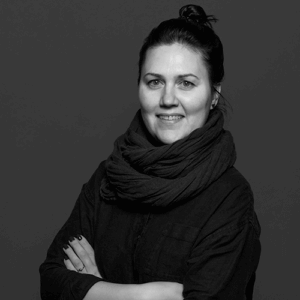
Why does fabric pucker when I sew?
Why does fabric pucker when I sew?
Chances are at some point in a sewing project you've suddenly found your fabric bunching and crumpling, or getting snagged up in your thread or needle. Fabric and seam puckering can be really annoying when you're sewing. Puckers can also appear after sewing, once a garment or project is washed. There are several causes of puckering, and once you understand these you can not only resolve the issue but also prevent it happening again.

What type of fabric are you sewing with?
One cause of puckering is the type of fabric itself. Robust fabrics like linen and cotton don't tend to naturally pucker, but some lightweight materials like nylon or silk are far more likely to ruck up in the sewing machine. Tightly woven fabrics are also more likely to pucker.
For a beginner sewer or if you need to work fast, try a fabric that won't gather as much as others for your projects. If you're not sure when choosing a fabric, the slippery, thin materials are the ones to avoid. Tight woven fabrics like canvas can also pucker easily.

Other causes of fabric puckering
Excess thread tension
This is a common cause of stitch and seam puckering. If you have adjusted the tension settings on your sewing machine incorrectly it will prevent enough thread getting to the stitch. The thread will stretch to compensate as you stitch. This results in puckering and crumpling.
A sign that your needle tension is too tight is visible bobbin thread and puckers on the upper thread stitches. If there are loops in the lower thread this could indicate incorrect bobbin tension, although this is less common.
Uneven pressure
When you're sewing two fabrics together - particularly materials with different weaves or weights - you can find there is more pressure exerted on the lower fabric, against the presser foot. The upper fabric has less pressure and this causes wrinkling.
Poorly wound bobbin
If your bobbin isn't properly wound, the thread can be too loose and this may cause your stitches to buckle and gather in the fabric. Make sure you use the sewing machine function to wind the bobbin rather than hand-winding, as this will keep the correct tension in the bobbin thread.

Blunt needles
Whilst general use needles will suffice for most fabrics, when sewing fine materials you need a really sharp needle. This will stop the needle snagging and causing crumples in the fabric.
Once you've used a needle for an entire sewing project, or for over three hours, it might be time to replace it. Regular needle changes help prevent wrinkling caused by blunt needles.
Wrong thread
If your sewing machine is threaded correctly but your fabric is still puckering, you might be using the wrong threads. Use a thread that matches the weight of your fabric: for sturdy, thick fabrics use a thicker upper thread and bobbin thread. For lightweight fabrics, opt for a fine thread. Pair your fabric and thread to ensure your stitches don't pull or gather.
Incorrect stitch length
Use a short stitch length to reduce the chance of puckers. For straight, uncrumpled stitches, use a straight stitch plate and straight stitch presser foot.

How to deal with puckers
When you're unlucky enough to find your fabric crumpling in the middle of sewing, here's what you can do to restore your project to its prime.
First, check that your needle is correctly threaded and that you've chosen the right thread for your fabric. Check that the needle is sharp and appropriate for the fabric.
Make sure your sewing machine tension is not set too tightly.
If you find your curved seam puckering, make sure you've trimmed the seam allowance properly, to remove excess fabric. Make small cuts at right angles to the seam, without cutting into the stitches, to create the curve and avoid puckering.
Test your thread tension before you start a project by sewing a straight line of stitching on a scrap piece of fabric. If your fabric is puckering while sewing you can cut the top and bottom threads along a short section of stitches. You can tell that if this relieves the bunching up, then your tension is too tight.

If your seam puckering is visible and affects the look of your garment you'll need to unpick and start stitching again. This is time-consuming and frustrating, so try to follow these simple tips to avoid getting to that point.
Once you understand the causes of seam puckering and fabric bunching, you can make sure your projects run smoothly by avoiding these pitfalls.
